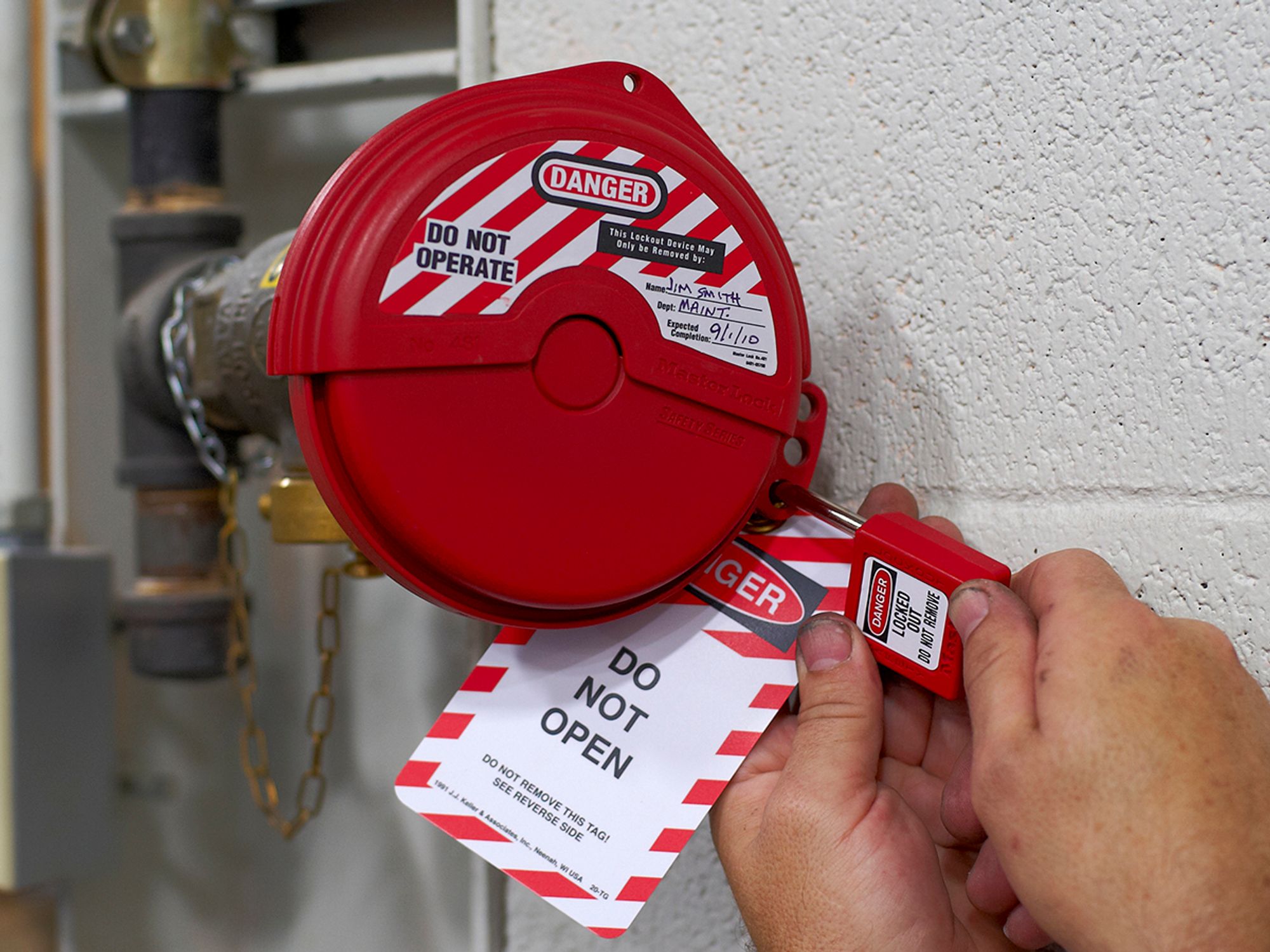What is lockout/tagout?

Lockout is the process of turning off and locking out the flow of energy from a power source to a piece of equipment or a circuit, and keeping it locked out. Lockout is accomplished by installing a lockout device at the power source.
Tagout is placing a tag on the power source. The tag acts as a warning not to restore energy — it is not a physical restraint. Tags must clearly state: Do Not Start.
It is critical that everyone knows the exact same lockout/tagout procedures, and are performing them the same. Otherwise, the program is ineffective and an accident waiting to happen.
The following information presents OSHA’s general requirements for controlling hazardous energy during service or maintenance of machines or equipment. It is not intended to replace or to supplement OSHA standards regarding the control of hazardous energy. After reading this text, you are urged to review the OSHA standards on the control of hazardous energy to gain a complete understanding of the requirements regarding the control of hazardous energy.
Lockout/tagout refers to specific practices and procedures to safeguard employees from the unexpected energization or startup of machinery and equipment, or the release of hazardous energy during service or maintenance activities. This requires, in part, that a designated individual turns off and disconnects the machinery or equipment from its energy source(s) before performing service or maintenance and that the authorized employee(s) either lock or tag the energy-isolating device(s) to prevent the release of hazardous energy and take steps to verify that the energy has been isolated effectively. If the potential exists for the release of hazardous stored energy or for the reaccumulation of stored energy to a hazardous level, the employer must ensure that the employee(s) take steps to prevent injury that may result from the release of the stored energy.
Lockout devices hold energy-isolation devices in a safe or “off” position. They provide protection by preventing machines or equipment from becoming energized because they are positive restraints that no one can remove without a key or other unlocking mechanism, or through extraordinary means, such as bolt cutters. Tagout devices, by contrast, are prominent warning devices that an authorized employee fastens to energy-isolating devices to warn employees not to reenergize the machine during service or maintenance activities. Tagout devices are easier to remove and, by themselves, provide employees with less protection than do lockout devices.
